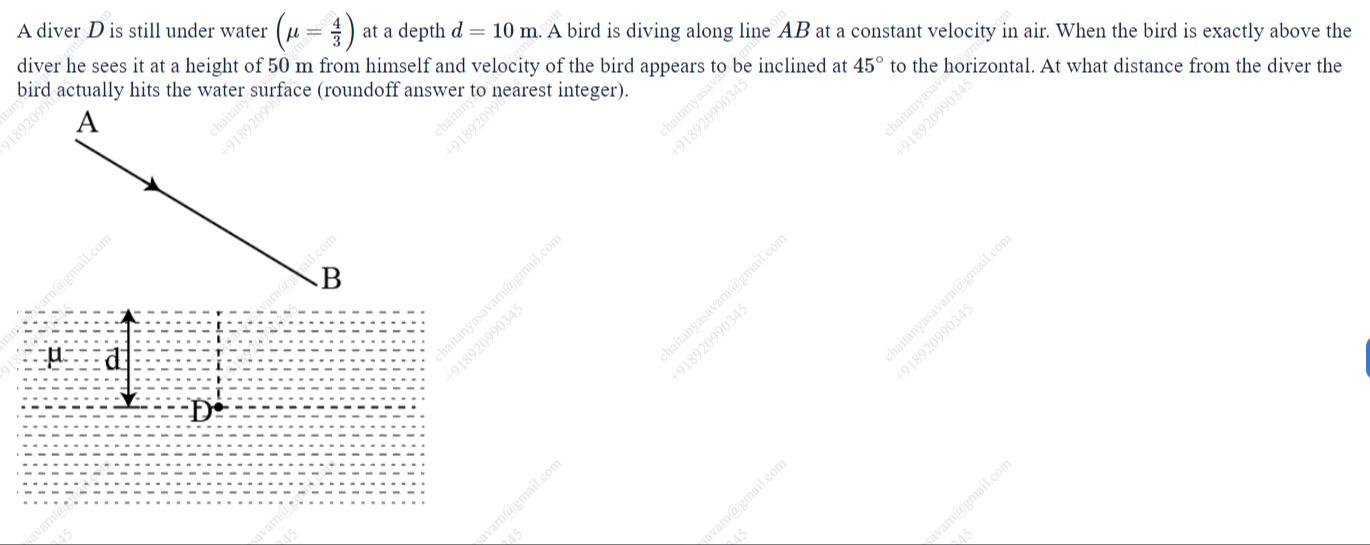Question
Question: A diver $D$ is still under water $(\mu = \frac{4}{3})$ at a depth $d=10$ m. A bird is diving along l...
A diver D is still under water (μ=34) at a depth d=10 m. A bird is diving along line AB at a constant velocity in air. When the bird is exactly above the diver he sees it at a height of 50 m from himself and velocity of the bird appears to be inclined at 45∘ to the horizontal. At what distance from the diver the bird actually hits the water surface (roundoff answer to nearest integer).

40 m
Solution
Solution
-
Determine the apparent altitude:
For a flat interface, an underwater observer sees an object in air at an apparent height
za=d+(H/μ).
At the instant when the bird is “directly above” the diver the diver sees it at a distance 50 m from him.
Thus,
d+H/μ=50.
Given d=10 m and μ=4⁄3,
H/(4⁄3)=50–10=40⟹H=(4⁄3)×40=160⁄3 m.
-
Relate the actual and apparent velocity components:
A simple “ray–differential” treatment shows that the underwater image of a bird at (x,H) is
A=(x,d+H/μ),
so that
(dxa/dt,dza/dt)=(dx/dt,(1/μ)dH/dt).
We are told that the apparent velocity is inclined at 45∘ to the horizontal. This gives
∣dza/dt∣=∣dxa/dt∣
⟹(1/μ)∣vz∣=vx
⟹∣vz∣=μvx=(4/3)vx.
-
Find time from the “above–diver” instant to hitting water:
At t=0 the bird is at B(0)=(0,H) with H=160/3 m. Its speed components are
vx=V and vz=–(4⁄3)V (negative as it’s descending).
The time T to reach the water surface (z=0) is found from
H+vzT=0⟹(160/3)–(4/3)V⋅T=0
⟹T=(160/3)/((4/3)V)=40/V.
-
Horizontal distance from the diver:
During time T the bird moves horizontally
x=V⋅T=V⋅(40/V)=40 m.
Thus, the bird actually hits the water 40 m from the diver.
Explanation (minimal):
- Use the apparent-image formula d+H/μ=50 to get H=(4⁄3)(50–10)=160⁄3.
- The velocity mapping gives ∣vz∣=(4⁄3)vx.
- Time to descend: T=H/∣vz∣=(160/3)/((4/3)V)=40/V, so horizontal shift = V⋅T=40 m.
